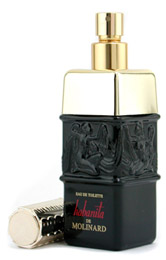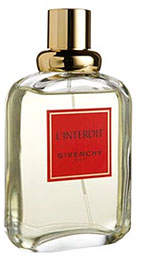Last of my original Calgon four-pack of body mists that Calgon referred to as the “Take Me Away” series. Morning Glory was a another fresh floral in the line. Unlike its very familiar sister, Turquoise Seas, Morning Glory opts for green fresh rather than blue marine fresh.
In Bottle: Green sharp opening with a floral backing. I get lily and green, very clean and sharp.
Applied: The green freshness in this isn’t the normal grassy green, you can tell this is an unabashed and unapologetic synthetic element being used to give the fragrance that clean and crisp feel. If you look past the green opening there’s a very thick layer of florals in the mid-stage that’s marked, once again, with a prominent lily note that’s intermingled with varying degrees of florals. However, there’s something a bit sweet and licorice like about Morning Glory that’s very appealing. It makes this fragrance seem a bit more grown up than the other three body mists I reviewed. I love that little licorice nip in the mid-stage and it sticks around for a bit as we round off near the end where the fragrance ends on a floral woodsy affair.
Extra: Morning Glory flowers don’t really smell like this but this is a nice interpretation of it anyway. I don’t mind Morning Glory though I doubt many of the notes in its notes list (see below) were really present or they were their heavily synthetic elements.
Design: Last time you get to hear this for a while but, Morning Glory is a blue liquid bottled in a tall plastic cylinder with a plastic spray nozzle. Once again, functional if somewhat plain in form.
Fragrance Family: Clean Floral
Notes: Green notes, galbanum, anise, apple, peach, pineapple, jasmine, lily of the valley, clove, oakmoss, musk, sandalwood.
So that about wraps it up for my trip down memory lane. These four body mists were far from the first perfume I ever wore but they were the first four I wore on a regular basis. I’m sure many of us can attest to trying on mom’s perfume when we were younger. I don’t quite remember what my first actual brush with perfume was, I want to say it was a Givenchy or maybe even Chanel No.5. What about you?
Reviewed in This Post: Morning Glory, 1999, Body Mist.






